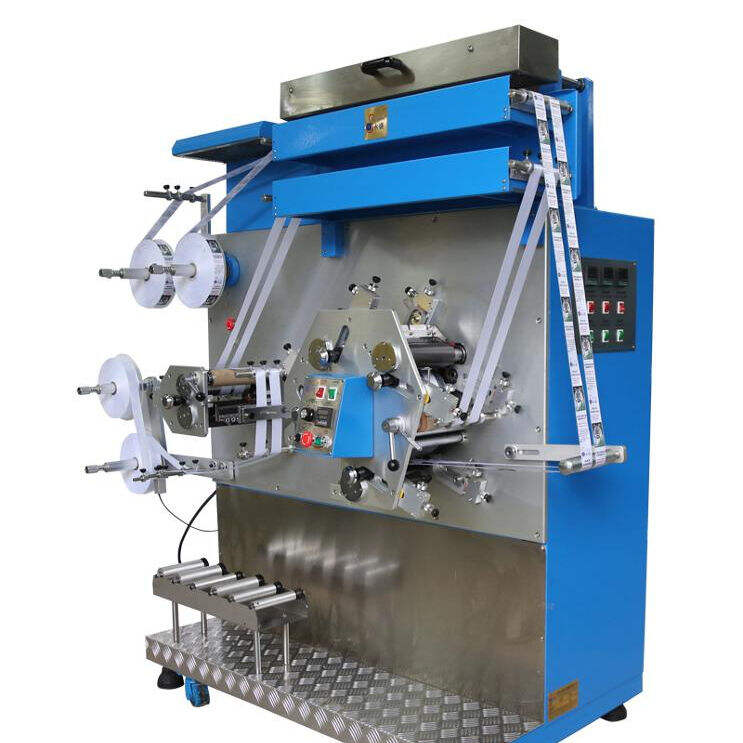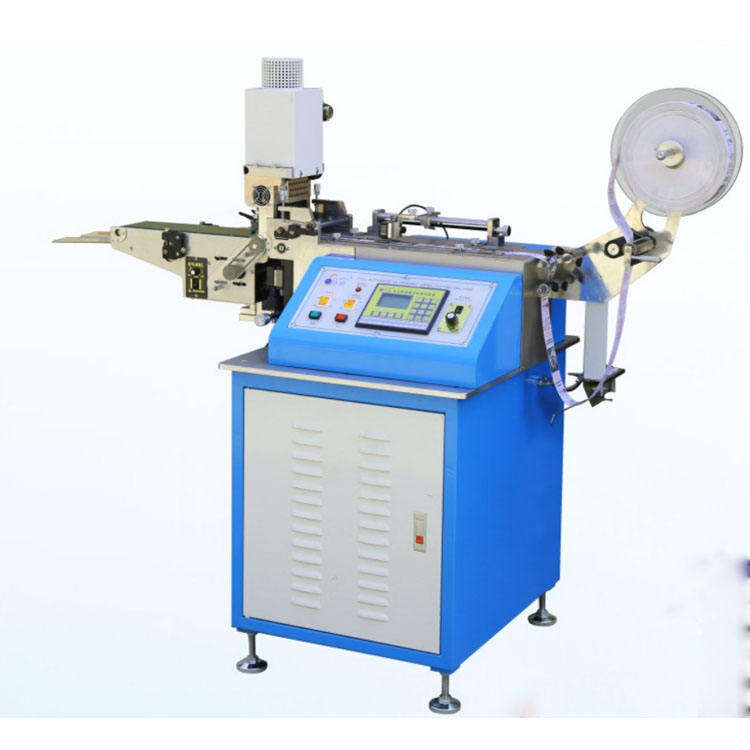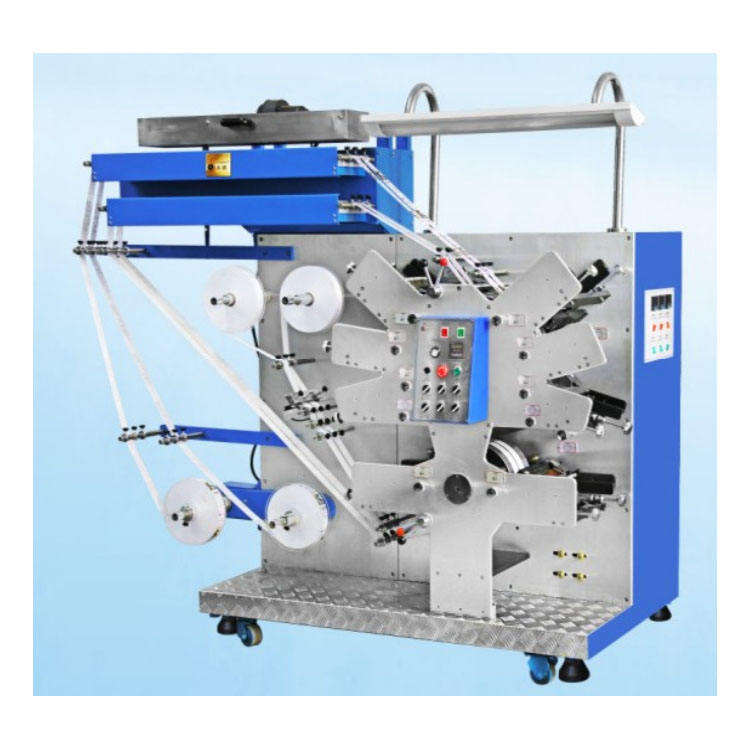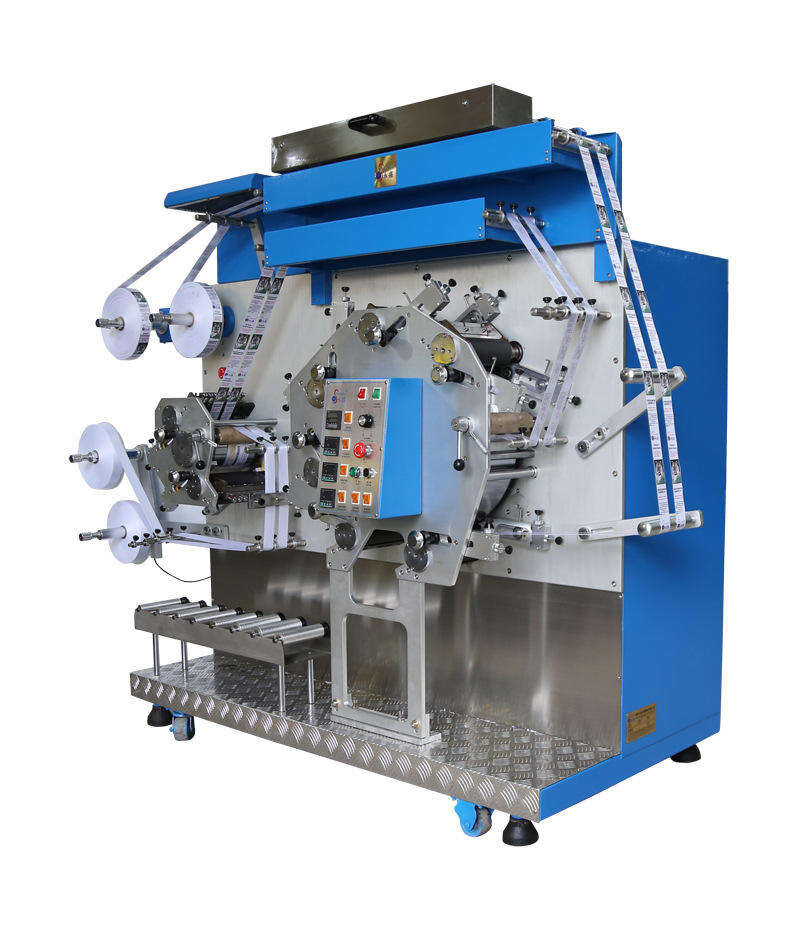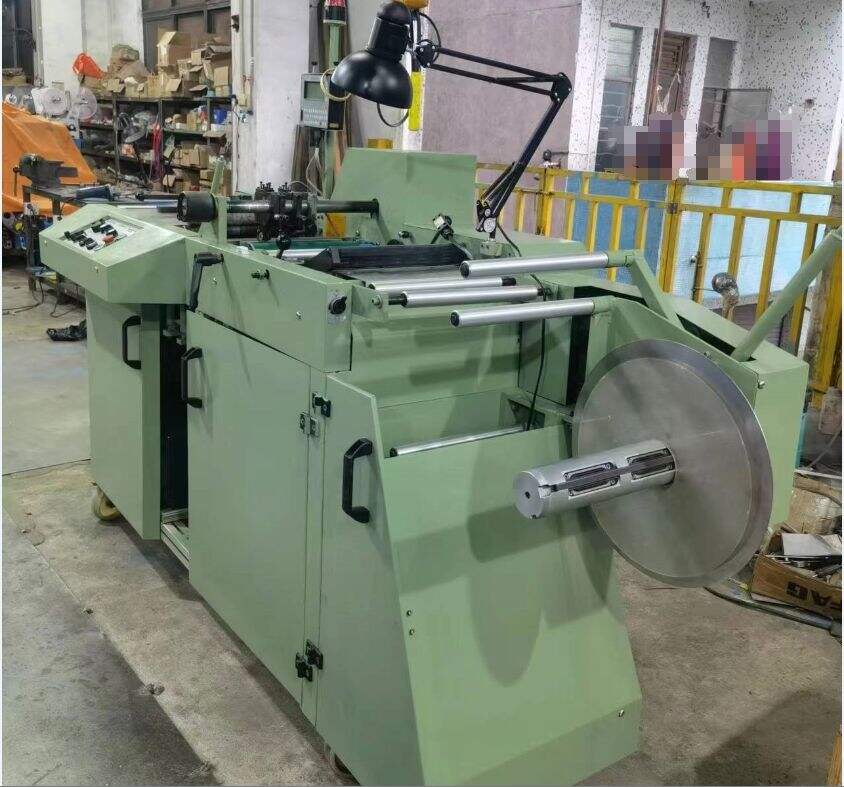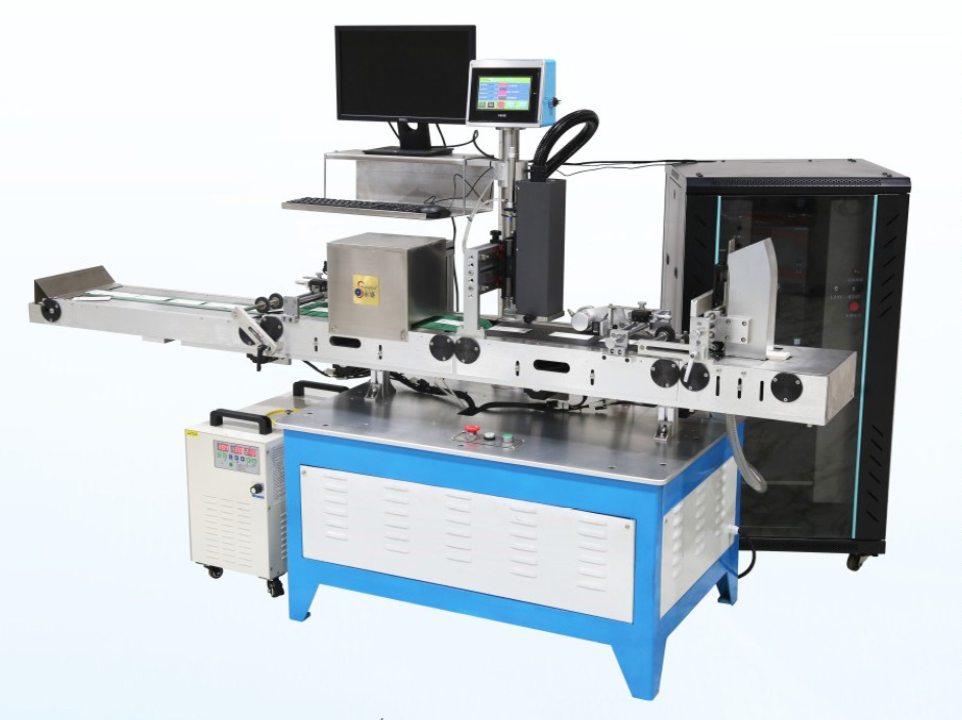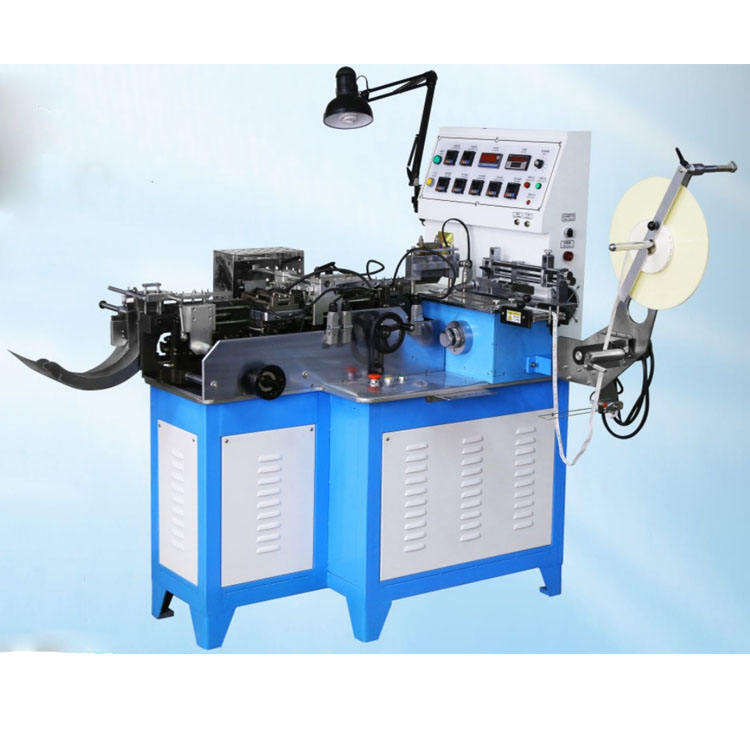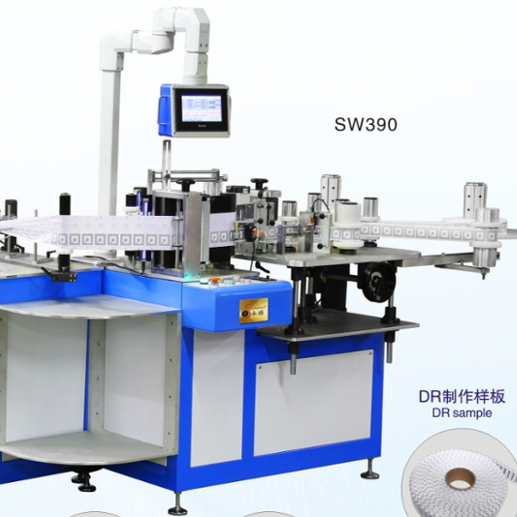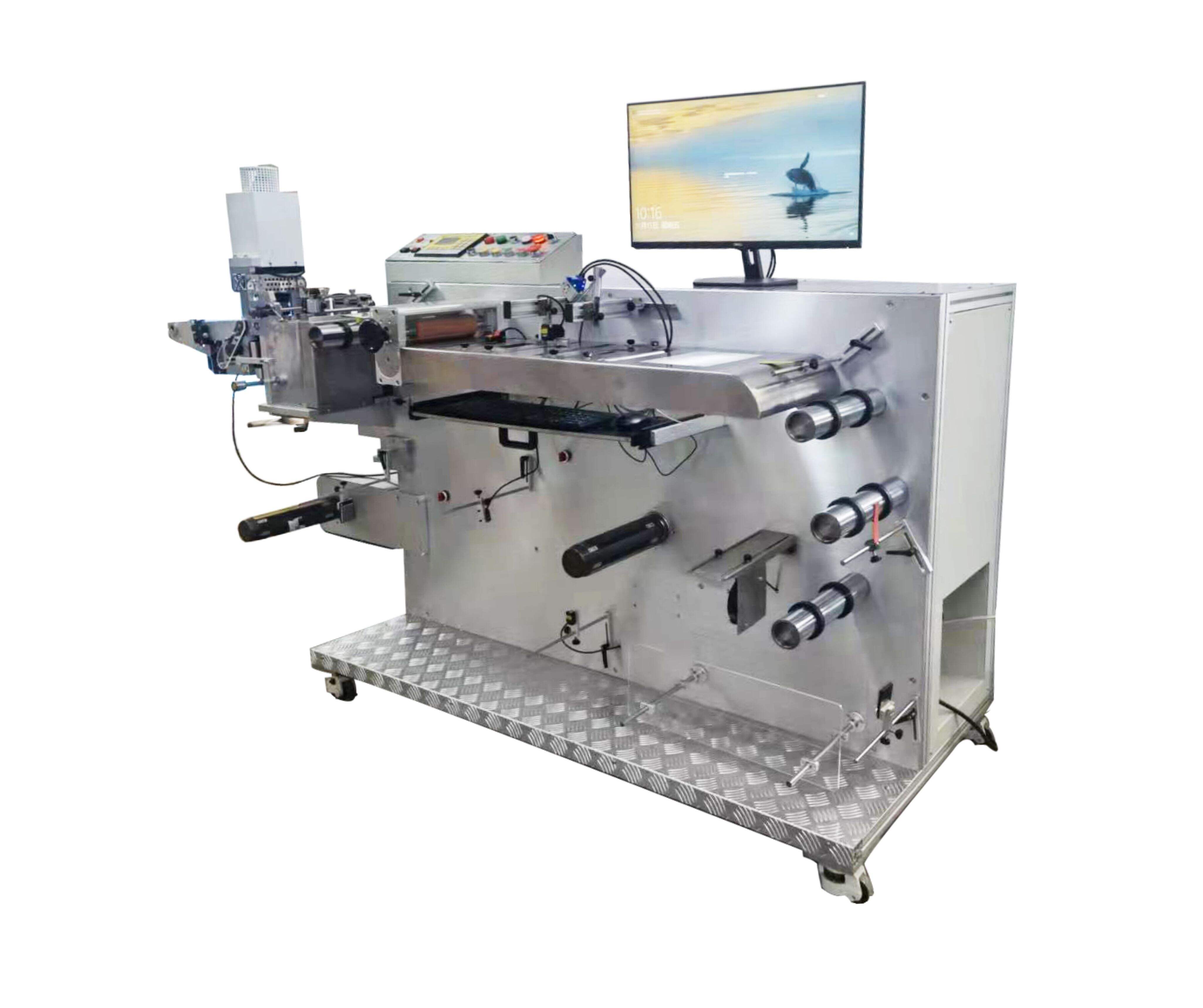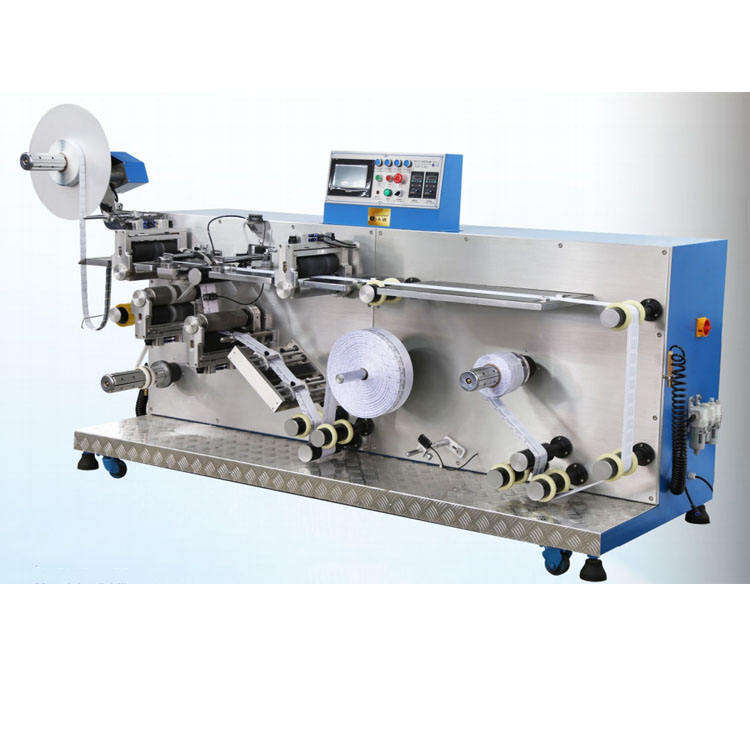ເຄື່ອງພິມແຜ່ນແຜ່ນອາດຈະສາມາດໃຫ້ຜົນໄດ້ເຊິ່ງສີສັນສົດໃສ ແລະ ຢືນຍົງໄດ້ແນວໃດ
ການເຂົ້າໃຈສິລະປະ ແລະ ວິທະຍາສາດຂອງເທກໂນໂລຊີການພິມແຜ່ນ
ການພິມແຜ່ນໄດ້ປະຕິວັດຕິການອຸດສາຫະກໍາເສື້ອຜ້າ ແລະ ກາຟິກ ໂດຍສະເໜີວິທີການທີ່ເຊື່ອຖືໄດ້ໃນການສ້າງການພິມທີ່ສວຍງາມ ແລະ ທົນທານໃນວັດສະດຸຕ່າງໆ. ຢູ່ໃຈກາງຂອງຂະບວນການນີ້ແມ່ນ screen print machine , ເຄື່ອງຈັກທີ່ສັບຊ້ອນຊຶ່ງປະສົມປະສານຄວາມແນ່ນອນດ້ານເຄື່ອງຈັກເຂົ້າກັບຄວາມເປັນໄປໄດ້ທາງສິລະປະ. ເຕັກໂນໂລຊີການພິມແຫຼວທີ່ທັນສະໄໝໄດ້ພັດທະນາຢ່າງຫຼວງຫຼາຍຈາກຈຸດເລີ່ມຕົ້ນຂອງມັນ, ປັດຈຸບັນນີ້ລວມເອົາຄຸນນະສົມບັດຂັ້ນສູງທີ່ຮັບປະກັນຄຸນນະພາບທີ່ສອດຄ່ອງກັນ ແລະ ຜົນໄດ້ຮັບທີ່ສົດໃສ.
ຄວາມສາມາດຂອງເຄື່ອງພິມແຫຼວໃນການສະໜອງການພິມທີ່ດີເລີດຂື້ນຢູ່ກັບປັດໃຈຫຼາຍຢ່າງ, ຈາກສະເພາະດ້ານເຕັກນິກຂອງເຄື່ອງຈັກຈົນຮອດຄວາມຊຳນິຊຳນານຂອງຜູ້ປະກອບການ. ເຄື່ອງຈັກໃນມື້ນີ້ລວມເອົາຄຸນນະສົມບັດໃໝ່ໆ ເຊັ່ນ: ການປັບຄ່າການລົງທະບຽນແບບໄມໂຄຣ, ໜ່ວຍການແກ້ໄຂຊົ່ວຄາວ ແລະ ລະບົບຄວບຄຸມການເຄື່ອນທີ່ອັດຕະໂນມັດທີ່ເຮັດວຽກຮ່ວມກັນເພື່ອບັນລຸຜົນໄດ້ຮັບທີ່ມີຄຸນນະພາບສູງ.
ອົງປະກອບທີ່ສຳຄັນຂອງເຄື່ອງຈັກການພິມແຫຼວມືອາຊີບ
ຫົວພິມ ແລະ ລະບົບການລົງທະບຽນ
ການປະກອບຫົວພິມແມ່ນສ່ວນປະກອບຫຼັກຂອງເຄື່ອງພິມແຫຼວທຸກຄົບຊຸດ, ມີໜ້າທີ່ຄວບຄຸມຄວາມກົດດັນແລະມຸມຂອງມີດພິມໃນຂະນະຂະບວນການພິມຢ່າງແທ້ຈິງ. ເຄື່ອງຈັກທີ່ທັນສະໄໝມີການຕັ້ງຄ່າຫຼາຍຫົວພິມທີ່ອະນຸຍາດໃຫ້ໃຊ້ສີຫຼາຍສີໃນການຜະລິດຕະພັນພຽງຄັ້ງດຽວ. ລະບົບການຈັດຕຳແໜ່ງຮັບປະກັນການຈັດຕຳແໜ່ງທີ່ແທ້ຈິງລະຫວ່າງຊັ້ນສີຕ່າງໆ, ນຳໃຊ້ກົນໄກການປັບແຕ່ງທີ່ແທ້ຈິງແລະເຄື່ອງມືການປັບຄ່າດິຈິຕອນ.
ລະບົບການຈັດຕຳແໜ່ງຂັ້ນສູງໃນປັດຈຸບັນນີ້ລວມເອົາເຄື່ອງມືຊີ້ແຈ້ງດ້ວຍແສງເລເຊີແລະການຄວບຄຸມຕຳແໜ່ງດິຈິຕອນ, ອະນຸຍາດໃຫ້ຜູ້ປະກອບການບັນລຸຄວາມຖືກຕ້ອງໃນການພິມຕຳແໜ່ງຢ່າງແທ້ຈິງ. ລະດັບຄວາມຖືກຕ້ອງນີ້ແມ່ນສຳຄັນຫຼາຍໃນການສ້າງແບບອິດສະລະຫຼາຍສີທີ່ຕ້ອງການການຈັດຕຳແໜ່ງທີ່ຖືກຕ້ອງລະຫວ່າງແຜ່ນແຫຼວແຕ່ລະອັນ.
ແຜ່ນແຫຼວແລະການກໍ່ສ້າງຂອບ
ຄຸນນະພາບຂອງແຜ່ນໃບແລະກອບມີບົດບາດສຳຄັນຕໍ່ຄວາມຊັດເຈນຂອງການພິມແລະຄວາມຄົງທົນ. ເຄື່ອງພິມທາງໜ້າທີ່ມືອາຊີບສາມາດຮອງຮັບໃບແຫຼມທີ່ແຕກຕ່າງກັນ, ໂດຍທົ່ວໄປແມ່ນແຕ່ 86 ຫາ 305 ເສັ້ນຕໍ່ນິ້ວ, ສະນັ້ນອະນຸຍາດໃຫ້ມີຄວາມຫນາຂອງຊັ້ນສີແລະລາຍລະອຽດທີ່ແຕກຕ່າງກັນໄດ້. ການກໍ່ສ້າງກອບຕ້ອງຮັກສາຄວາມຕຶງໄວ້ໃຫ້ຖືກຕ້ອງເພື່ອຮັບປະກັນການຖ່າຍໂອນສີທີ່ສອດຄ່ອງແລະປ້ອງກັນການບິດເບືອນໃນຂະນະທີ່ກຳລັງພິມ.
ກອບເຄື່ອງພິມທາງໜ້າທີ່ທັນສະໄໝມັກກໍ່ສ້າງຈາກອາລູມິນຽມຫຼືໂລຫະສັງເຄາະພິເສດທີ່ຕ້ານການບິດງໍແລະຮັກສາຄວາມໝັ້ນຄົງໄວ້ໃຕ້ການນຳໃຊ້ຊ້ຳໆ. ວັດສະດຸເຫຼົ່ານີ້ຊ່ວຍຮັບປະກັນຄວາມຕຶງທີ່ສອດຄ່ອງໃນທົ່ວພື້ນທີ່ໜ້າຈໍທັງໝົດ, ສະນັ້ນຊ່ວຍປັບປຸງຄຸນນະພາບຂອງການພິມແລະຫຼຸດເວລາການຕັ້ງຄ່າ.
ເຕັກນິກການພິມຂັ້ນສູງສຳລັບຜົນໄດ້ຮັບທີ່ດີເລີດ
ການເລືອກສີແລະວິທີການນຳໃຊ້
ປະເພດຂອງໝຶກແລະວິທີການນຳໃຊ້ສົ່ງຜົນຢ່າງຫຼວງຫຼາຍຕໍ່ຄວາມຊັດເຈນແລະອາຍຸການໃຊ້ງານຂອງການພິມ. ເຄື່ອງພິມແຜ່ນຢາງມືອາຊີບຖືກອອກແບບມາເພື່ອໃຊ້ກັບສູດໝຶກຕ່າງໆ, ຈາກໝຶກພາດສະຕິກ (plastisol) ເຖິງໝຶກນ້ຳ ແລະ ໝຶກພິເສດ. ລະບົບການຕັ້ງຄ່າການເຄື່ອນຍ້າຍ (stroke settings) ແລະ ລະບົບຄວບຄຸມກົດດັນຂອງເຄື່ອງຕ້ອງໄດ້ຮັບການປັບຕັ້ງຢ່າງເໝາະສົມເພື່ອໃຫ້ໄດ້ຄວາມໜາຂອງຊັ້ນໝຶກທີ່ດີທີ່ສຸດສຳລັບແຕ່ລະການນຳໃຊ້ໂດຍສະເພາະ.
ອຸປະກອນທີ່ທັນສະໄໝມັກມີລະບົບກົດດັນແລະຄ່າຕົວເລກທີ່ສາມາດໂປຣແກມໄດ້ ແລະ ສາມາດບັນທຶກໄວ້ເພື່ອໃຊ້ຄືນໃໝ່ເພື່ອໃຫ້ໄດ້ຜົນໄດ້ເຊິ່ງພາຍໃນການຜະລິດຊຸດຕ່າງໆ. ຄວາມສາມາດນີ້ຮັບປະກັນວ່າເມື່ອການຕັ້ງຄ່າທີ່ດີທີ່ສຸດຖືກກຳນົດແລ້ວ, ມັນສາມາດຖືກນຳໃຊ້ຄືນໄດ້ຢ່າງແນ່ນອນສຳລັບຄຳສັ່ງໃນອະນາຄົດ.
ລະບົບການແຫ້ງແລະການຄວບຄຸມຄຸນນະພາບ
ການບຳບັດທີ່ເໝາະສົມແມ່ນມີຄວາມສຳຄັນຕໍ່ການບັນລຸຜົນໄດ້ທີ່ຄົງທົນຖາວອນຕໍ່ການຊັກຟອກແລະການສວມໃສ່. ເຄື່ອງພິມສະແຕມບມືອາຊີບມັກຈະປະສົມປະສານໜ່ວຍບຳບັດແບບແປວໄຟຟ້າແລະເຄື່ອງເຮັດໃຫ້ແຫ້ງແບບອຸໂມງທີ່ມີການຄວບຄຸມອຸນຫະພູມຢ່າງແທດເຈັດແລະການປັບຄວາມໄວຂອງເຂັນສົ່ງ. ລະບົບເຫຼົ່ານີ້ຮັບປະກັນວ່າແຕ່ລະຊັ້ນສີຈະຖືກບຳບັດຢ່າງເໝາະສົມໂດຍບໍ່ເຮັດໃຫ້ເນື້ອໃນເສຍຫາຍຫຼືສົ່ງຜົນກະທົບຕໍ່ສີທີ່ຖືກປະຕິບັດກ່ອນໜ້ານີ້.
ຄຸນນະສົມບັດການຄວບຄຸມຄຸນນະພາບເຊັ່ນການຕິດຕາມອຸນຫະພູມ, ເຊັນເຊີຄວາມໄວຂອງເຂັນແລະວົງຈອນການເຢັນຕົວໂດຍອັດຕະໂນມັດຊ່ວຍຮັກສາເງື່ອນໄຂການບຳບັດໃຫ້ຄົງທີ່ຕະຫຼອດການຜະລິດ. ວິທີການບຳບັດແບບລະບົບນີ້ມີສ່ວນຮ່ວມຢ່າງຫຼວງຫຼາຍຕໍ່ອາຍຸການໃຊ້ງານຂອງຜົນໄດ້ສຸດທ້າຍ.
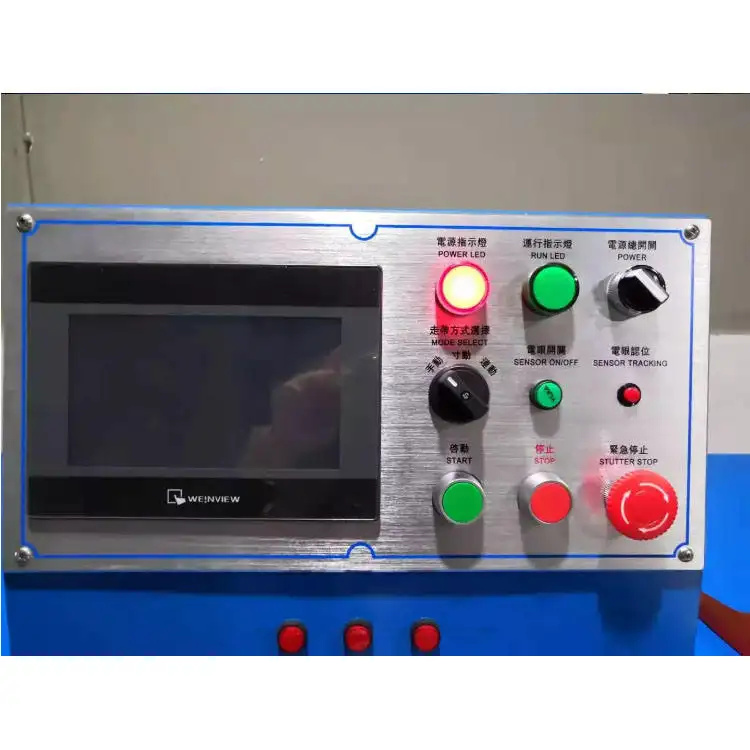
ການບໍາລຸງຮັກສາ ແລະ ການປັບປຸງປະຕິບັດ
ການທຳຄວາມສະອາດແລະການປັບຄ່າຢ່າງສະໝໍ່າສະເໝີ
ການຮັກສາສະພາບເຄື່ອງພິມແຫຼວໃຫ້ຢູ່ໃນສະພາບທີ່ດີທີ່ສຸດ ຕ້ອງມີການທຳຄວາມສະອາດແລະການປັບຄ່າຢ່າງສະໝໍ່າສະເໝີ. ສາຍແຫ້ງຕ້ອງໄດ້ຮັບການທຳຄວາມສະອາດຢ່າງລະອອຍຫຼັງຈາກໃຊ້ແຕ່ລະຄັ້ງ ເພື່ອປ້ອງກັນການສະສົມຂອງສີທີ່ອາດຈະສົ່ງຜົນກະທົບຕໍ່ຄຸນນະພາບການພິມ. ການປັບຄ່າຢ່າງສະໝໍ່າສະເໝີຂອງລະບົບການຈັດຕຳແໜ່ງ, ຄວາມດັນ, ແລະສ່ວນປະກອບເຄື່ອງຈັກອື່ນໆ ຈະຮັບປະກັນການປະຕິບັດງານທີ່ສອດຄ່ອງແລະການພິມທີ່ຖືກຕ້ອງແນ່ນອນ.
ຜູ້ປະກອບການທີ່ເປັນມືອາຊີບຈະພັດທະນາແຜນການບຳລຸງຮັກສາຢ່າງລະອອຍທີ່ປະກອບມີຂັ້ນຕອນການທຳຄວາມສະອາດປະຈຳວັນ, ການກວດສອບການປັບຄ່າປະຈຳອາທິດ, ແລະຂັ້ນຕອນການບຳລຸງຮັກສາແບບປ້ອງກັນປະຈຳເດືອນ. ວິທີການລະບົບນີ້ຊ່ວຍປ້ອງກັນບັນຫາຂອງເຄື່ອງຈັກທີ່ອາດຈະສົ່ງຜົນກະທົບຕໍ່ຄຸນນະພາບການພິມ ຫຼືເຮັດໃຫ້ການຜະລິດຊັກຊ້າ.
ການຄວບຄຸມສິ່ງແວດລ້ອມ ແລະການຈັດຕັ້ງສະຖານທີ່ເຮັດວຽກ
ສະພາບແວດລ້ອມທີ່ເຄື່ອງພິມໜ້າຈໍເຮັດວຽກສາມາດສົ່ງຜົນກະທົບຕໍ່ຄຸນນະພາບການພິມໄດ້ຢ່າງຫຼວງຫຼາຍ. ອຸນຫະພູມ, ຄວາມຊື້ນ, ແລະ ຄຸນນະພາບອາກາດຕ້ອງຖືກຄວບຄຸມຢ່າງລະມັດລະວັງເພື່ອຮັກສາສະພາບການພິມທີ່ດີທີ່ສຸດ. ຮ້ານພິມທີ່ທັນສະໄໝມັກໃຊ້ລະບົບຄວບຄຸມອາກາດແລະຕົວກັ່ນອາກາດເພື່ອສ້າງສະພາບແວດລ້ອມການພິມທີ່ເໝາະສົມ.
ການຈັດແບ່ງພື້ນທີ່ອົງປະກອບແລະການຈັດຕັ້ງການເຮັດວຽກກໍ່ມີບົດບາດສຳຄັນໃນການບັນລຸຜົນໄດ້ຮັບທີ່ສອດຄ່ອງກັນ. ການຈັດເຄື່ອງຈັກໃຫ້ຫ່າງເໝາະສົມ, ແສງສະຫວ່າງພຽງພໍ, ແລະ ລະບົບການຈັດການວັດຖຸດິບທີ່ມີປະສິດທິພາບ ຈະຊ່ວຍເພີ່ມປະສິດທິພາບແລະຄຸນນະພາບການພິມ.
ຄໍາ ຖາມ ທີ່ ມັກ ຖາມ
ປັດໃຈໃດແດ່ທີ່ສົ່ງຜົນຕໍ່ຄວາມຄົງທົນຂອງການພິມໃນການພິມໜ້າຈໍ?
ຄວາມຄົງທົນຂອງການພິມຂຶ້ນຢູ່ກັບປັດໃຈຕົ້ນຕໍຫຼາຍຢ່າງ, ລວມທັງການເລືອກທາດສີ, ອຸນຫະພູມແລະເວລາໃນການແຫ້ງຕົວ, ຄຸນນະພາບຂອງວັດຖຸດິບ, ແລະ ຂັ້ນຕອນການກຽມພ້ອມທີ່ຖືກຕ້ອງ. ການໃຊ້ເບີຂອງໜ້າຈໍໃຫ້ເໝາະສົມກັບການນຳໃຊ້ທີ່ກຳນົດໄວ້ ແລະ ການຮັບປະກັນໃຫ້ທາດສີມີຄວາມໜາເໝາະສົມ ກໍ່ມີຜົນກະທົບຫຼວງຫຼາຍຕໍ່ອາຍຸການໃຊ້ງານຂອງການພິມ.
ເຄື່ອງພິມແຜ່ນຄວນປັບຄືນໃໝ່ເທື່ອໃດ?
ເครື່ອງພິມສະກຣີນມືອາຊີບຄວນໄດ້ຮັບການກວດສອບຄວາມຖືກຕ້ອງພື້ນຖານທຸກໆມື້, ກັບຂະບວນການກວດສອບຄວາມຖືກຕ້ອງຢ່າງຄົບຖ້ວນຫຼາຍຂຶ້ນທີ່ດໍາເນີນປະມານທຸກອາທິດ ຫຼື ທຸກສອງອາທິດຂຶ້ນຢູ່ກັບປະລິມານການໃຊ້ງານ. ລະບົບການປັບຕໍາແຫນ່ງ, ການຕັ້ງຄ່າຄວາມດັນ, ແລະ ພາລາມິເຕີຂອງສາຍພິມຄວນໄດ້ຮັບການຢືນຢັນກ່ອນການດໍາເນີນການຜະລິດແຕ່ລະຄັ້ງເພື່ອຮັບປະກັນຄຸນນະພາບທີ່ສອດຄ່ອງກັນ.
ສະພາບແວດລ້ອມໃດແມ່ນເໝາະສົມທີ່ສຸດສໍາລັບການພິມສະກຣີນ?
ສະພາບແວດລ້ອມທີ່ເໝາະສົມສໍາລັບການພິມສະກຣີນຄວນຮັກສາອຸນຫະພູມໃນຂອບເຂດ 65-75°F (18-24°C) ແລະ ຄວາມຊື້ນສໍາພັນໃນຂອບເຂດ 45-60%. ອາກາດທີ່ສະອາດ ແລະ ບໍ່ມີຝຸ່ນ ພ້ອມທັງການລົມທີ່ເໝາະສົມແມ່ນມີຄວາມສໍາຄັນຫຼາຍໃນການບັນລຸຜົນໄດ້ຮັບການພິມທີ່ດີທີ່ສຸດ ແລະ ການຮັກສາປະສິດທິພາບຂອງເຄື່ອງຈັກ.
ຜະລິດຕະພັນທີ່ແນະນຳ
ຂ່າວຮ້ອນ
-
ພິຈາລະນາ ເຖິງ ຄວາມ ສໍາຄັນ ຂອງ ເຄື່ອງ ພິມ ໃນ ວັດທະນະທໍາ ໃນ ການ ປົກ ປັກ ຮັກສາ ແລະ ເຜີຍ ແຜ່ ຄວາມ ຮູ້
2023-12-08
-
ບົດບາດຂອງເຄື່ອງພິມ ໃນເສດຖະກິດໂລກ
2023-12-08
-
ຜົນກະທົບຕໍ່ສິ່ງແວດລ້ອມ: ການວິເຄາະການປະເມີນຜົນດ້ານສິ່ງແວດລ້ອມຂອງອຸດສາຫະ ກໍາ ການພິມ
2023-12-08
-
ເສັ້ນຜ່າກາງຂອງການພິມ: ການພິມ 3d ແລະການຟື້ນຟູອຸດສາຫະກໍາຂອງມັນ
2023-12-08
-
ການ ພັດທະນາ ແລະ ຜົນ ກະທົບ ຂອງ ເຄື່ອງ ພິມ
2023-12-08
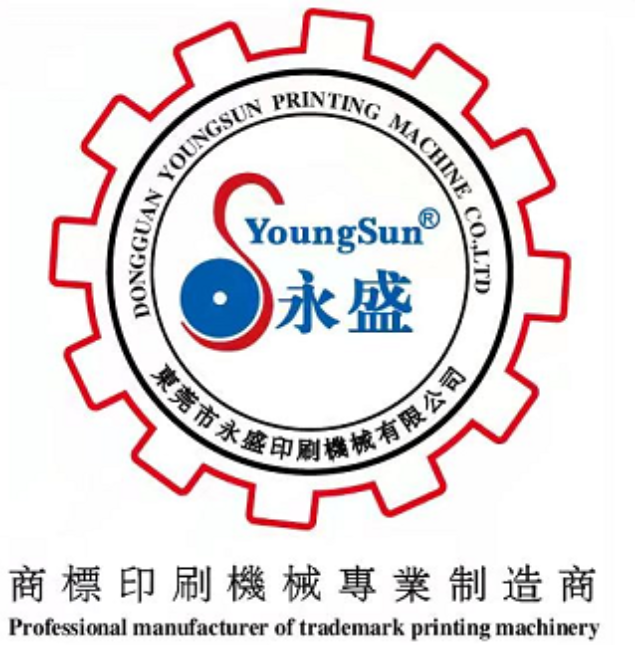
 EN
EN
 AR
AR
 CS
CS
 DA
DA
 NL
NL
 FI
FI
 FR
FR
 DE
DE
 EL
EL
 HI
HI
 IT
IT
 JA
JA
 KO
KO
 PL
PL
 PT
PT
 RO
RO
 RU
RU
 ES
ES
 SV
SV
 IW
IW
 ID
ID
 VI
VI
 SQ
SQ
 HU
HU
 MT
MT
 TH
TH
 TR
TR
 AF
AF
 GA
GA
 BN
BN
 BS
BS
 LO
LO
 LA
LA
 MI
MI
 MN
MN
 NE
NE
 MY
MY
 KK
KK
 UZ
UZ
 KY
KY
